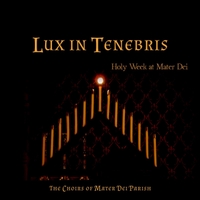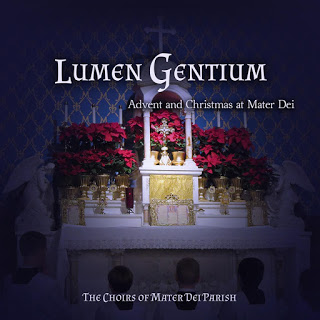Thus far, I have refrained from writing about the Amazonian Synod, a truly bizarre chapter in the history of the current papacy. By now, it is well known that Pope Francis attended a ceremony near the start of the synod at which some very pagan-looking things took place and at which some very idol-esque statues took a prominent role. This is just a fact of the public record. Likewise, it is of the public record that a few unidentified men took these “statuettes” out of the Catholic church in which they had subsequently been enshrined and threw them into the Tiber.
These events have been thoroughly documented, and I would most likely not be writing about them now if it were not for this public statement just issued by the Vatican spokesman, Andrea Tornielli.
Perhaps such a statement should not be honored with a rebuttal, but considering the sacred nature of the Church, the grave sin of idolatry, and in defense of the newly canonized saint, I take pen in hand. In fact, I’m going to take this one assertion at a time.
The “Statuettes”
The theft and casting into the Tiber River of several wooden statues from the Amazon depicting a young pregnant woman is a sad episode that speaks for itself.
Andrea Tornielli
I agree that this act speaks. What is also telling is how the spokesman describes the statues themselves as “depicting a young pregnant woman”. I hate to point out the obvious, but these statues rather depict a naked pregnant woman in not a particularly flattering pose. To the causal observer, they look like idols. Verily, I suspect these “statuettes” represent something more than “a pregnant young woman”.
Certain reactions to this violent and intolerant gesture, following its publication on social media, have been striking: “Justice is done”, reads the enthusiastic headline on one Italian website. An image of motherhood and the sacredness of life, a traditional symbol for indigenous peoples representing the bond with our “mother earth”, as described by Saint Francis of Assisi in his Canticle of the Creatures, was thrown away with contempt in the name of tradition and doctrine.
Adrea Tornielli
In these sentences, we are now told the “statuettes” are images of “motherhood and the sacredness of life…representing the bond with our ‘mother earth'”. So, indeed, they do represent something more than “young pregnant women”. On this point, both sides can agree.
St. Francis of Assisi — Defender of the Amazon?
To preempt any objection to what the “statuettes” symbolize–note that they no longer merely depict pregnant women–Tornielli invokes St. Francis of Assisi. Bringing in the Canticle of the Creatures, the implication is that St. Francis blesses the same reality that these images signify. But I highly doubt that St. Francis of Assisi had these “statuettes” or any Amazonian concepts of “Mother Earth” in mind when he wrote his Canticle of the Creatures. The canticle itself mentions “Mother Earth” only once, and in the following context:
Praised be you, my Lord,
St. Francis of Assisi
through our Sister, Mother Earth,
who sustains us and directs us
bringing forth all kinds of fruits
and colored flowers and herbs.
Note St. Francis’s emphasis on God being praised, not “Mother Earth”. And if it was God and not “Mother Earth” being praised through these “statuettes”, then why were the indigenous people bowing before them at the ceremony? Would this not at least give the appearance of idolatry? With the Pope looking on, would this not leave some people scratching their heads?
Frankly, traditional indigenous symbols are pagan, not Catholic. Even if one were to argue that they represent something different today, these “statuettes” surely did not identify with the Catholic understanding of our relationship to the earth–and certainly not our relationship to God–prior to the spread of the Gospel in the Amazon.
To conclude his first paragraph, Tornielli suggests that the act of throwing the “statuettes” away was done in contempt of St. Francis’ views and “in the name of tradition and doctrine”. Note the juxtaposition of St. Francis (the good guy who must be right because he’s a saint) and tradition and doctrine (the bad guys who are always getting it wrong). I think St. Francis would cringe. No, he would do more than cringe. He would say that if anything he said were not in accordance with tradition and doctrine, he, St. Francis, must be mistaken.
St. John Henry Newman, Amazonian Synod Father?
Having invoked St. Francis of Assisi, Tornielli next looks for a modern saint to confirm the value of the “statuettes”. For this, he turns to St. John Newman, newly canonized, whom no one may dare contradict.
The new iconoclasts, who have gone from expressing their hatred through social media to acting in this way, might find it useful to re-read what was said by one of the new saints canonized a few days ago, Cardinal John Henry Newman.
– Andrea Tornielli
Tornielli, in his rather brief statement, provides a single quote from Newman’s Essay on the Development of Christian Doctrine.
The use of temples, and these dedicated to particular saints, and ornamented on occasions with branches of trees, incense, lamps and candles; votive offerings on recovery from illness; holy water, asylums; holy days and seasons, use of calendars, processions, blessings on the fields, sacerdotal vestments, the tonsure, the ring in marriage, turning to the east, images at a later date, perhaps the ecclesiastical chant, and the Kyrie Eleison, are all of pagan origin, and sanctified by their adoption into the church.
St. John Henry Newman, Essay on the Development of Christian Doctrine
It appears Tornielli would have us believe that, because certain elements we have in Catholicism–particularly external elements–were earlier present in paganism, that it should be routine to accept the Amazonian “statuettes” in the Church. The Church seemingly makes them holy; thus, their destruction is nothing but repugnant “iconoclasm”. After all, St. John Newman acknowledges the contribution of pagan peoples in the Church’s history. Tornielli leaves us with this quote, as if it defies all argument.
Yet, in his eagerness to involve the new saint, Tornielli inadvertently throws off the facade. Suddenly these “statuettes” are identified with what St. John Newman was discussing, namely pagan elements. In this brief press release, where we are assured there is nothing to justify the “violent and intolerant act” of the unidentified men, the true identity of the “statuettes” is slowly revealed. They are not just indigenous, they are pagan.
Does St. John Newman’s essay defend the dignity of the pagan “statuettes” and their enshrinement within a Catholic church? Let’s see what else the saint has to say about paganism in the very same essay. Here, St. John Newman is, himself, quoting Theodoret:
“Nay, of the so-called gods, so utterly have the sacred places been destroyed, that not even their outline remains, nor the shape of their altars is known to men of this generation, while their materials have been dedicated to the shrines of the Martyrs. For the Lord has introduced His own dead in place of your gods; of the one He hath made a riddance, on the other He hath conferred their honours. For the Pandian festival, the Diasia, and the Dionysia, and your other such, we have the feasts of Peter, of Paul, of Thomas, of Sergius, of Marcellus, of Leontius, of Panteleëmon, of Antony, of Maurice, and of the other Martyrs; and for that old-world procession, and indecency of work and word, are held modest festivities, without intemperance, or revel, or laughter, but with divine hymns, and attendance on holy discourses and prayers, adorned with laudable tears.”
This was the view of the “Evidences of Christianity” which a Bishop of the fifth century offered for the conversion of unbelievers.
St. John Newman, Essay on the Development of Christian Doctrine (emphasis mine)
And later:
… [A]s I have given extracts from Theodoret for the developments of the fourth and fifth centuries, so will I now cite St. John Damascene in defence of the further developments of the eighth.
“As to the passages you adduce,” he says to his opponents, “they abominate not the worship paid to our Images, but that of the Greeks, who made them gods. It needs not therefore, because of the absurd use of the Greeks, to abolish our use which is so pious. Enchanters and wizards use adjurations, so does the Church over its Catechumens; but they invoke devils, and she invokes God against devils. Greeks dedicate images to devils, and call them gods; but we to True God Incarnate, and to God’s servants and friends, who drive away the troops of devils.”
St. John Newman quoting St. John Damascene, Essay on the Development of Christian Doctrine (emphasis mine)
In fact, St. John Newman’s essay seems to be entirely opposite to what Tornielli would have us understand. That we Catholics have images just as the pagans did (and still do) does not make us like the pagans nor does it somehow make the pagans’ images good. We do not worship false gods through our images, as they do. Here again, is St. John Newman:
The principle of the distinction, by which these observances were pious in Christianity and superstitious in paganism, is implied in such passages of Tertullian, Lactantius, and others, as speak of evil spirits lurking under the pagan statues. It is intimated also by Origen, who, after saying that Scripture so strongly “forbids temples, altars, and images,” that Christians are “ready to go to death, if necessary, rather than pollute their notion of the God of all by any such transgression,” assigns as a reason “that, as far as possible, they might not fall into the notion that images were gods.” St. Augustine, in replying to Porphyry, is more express; “Those,” he says, “who are acquainted with Old and New Testament do not blame in the pagan religion the erection of temples or institution of priesthoods, but that these are done to idols and devils. . . True religion blames in their superstitions, not so much their sacrificing, for the ancient saints sacrificed to the True God, as their sacrificing to false gods.” To Faustus the Manichee he answers, “We have some things in common with the gentiles, but our purpose is different.” And St. Jerome asks Vigilantius, who made objections to lights and oil, “Because we once worshipped idols, is that a reason why we should not worship God, for fear of seeming to address him with an honour like that which was paid to idols and then was detestable, whereas this is paid to Martyrs and therefore to be received?”
St. John Newman, Essay on the Development of Christian Doctrine (emphasis mine)
Which position more closely follows the philosophy of St. John Newman and the several saints he quotes? Tornielli’s or the men who flung the “statuettes” into the river?
In Conclusion
In a related article, Dr Paolo Ruffini’s response to a journalist’s question was published:
We have already repeated several times here that those statues represented life, fertility, mother earth. It was a gesture – I believe – that contradicts the spirit of dialogue that should always inspire us. I don’t know what else to say except that it was a theft, and perhaps that speaks for itself.
Dr. Paolo Ruffini, Prefect of the Vatican Dicastery for Communication
In one respect, I hope his assessment of what those “statuettes” represented is correct. If he is not, the words of Christ make me wonder if the day is not fast approaching when we should head for the hills:
When therefore you shall see the abomination of desolation, which was spoken of by Daniel the prophet, standing in the holy place: he that readeth let him understand. Then they that are in Judea, let them flee to the mountains: And he that is on the housetop, let him not come down to take any thing out of his house: And he that is in the field, let him not go back to take his coat.
Matthew 24:15-17 (emphasis mine)
About the Featured Image
The featured image is Daniel and King Cyrus Before the Idol Bel by Rembrandt. It is in the public domain in the United States.




